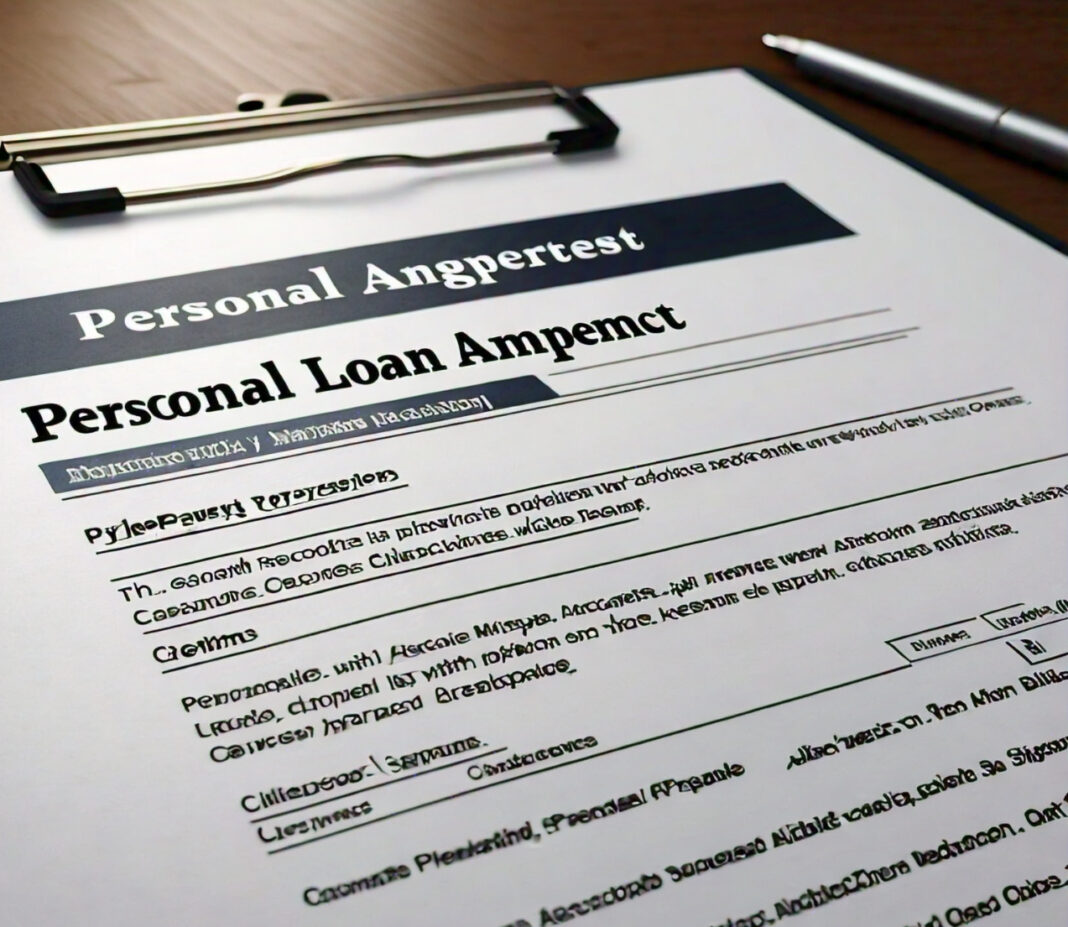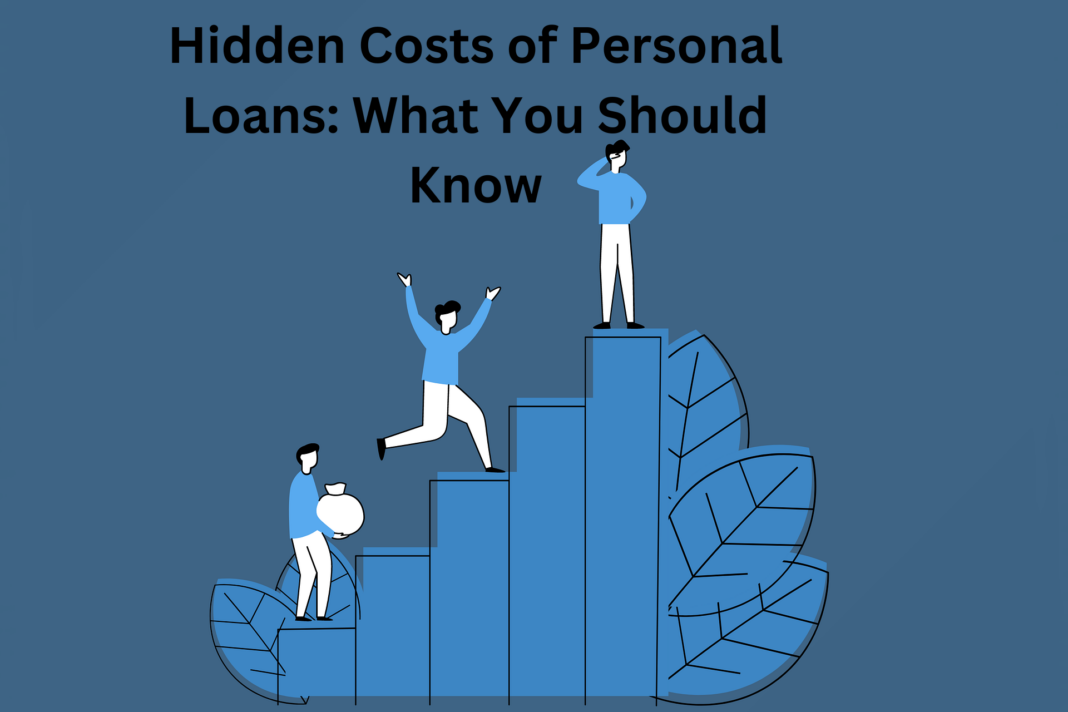You might think paying off a personal loan early is a no-brainer financially. After all, the sooner you are debt-free, the better. Generally, that’s true, but some lenders throw a wrench into that plan in the form of prepayment penalties. These, which many lenders charge when you pay off your loan ahead of schedule, turn what feels like a responsible financial decision into an unexpected expense.

This is a more extensive guide to prepayment penalties for personal loans. We will see what prepayment penalties are, why they exist, how they apply, and, most importantly, how one could avoid or minimize them. Understanding prepayment penalties, whether you are considering taking out a personal loan or in the process of repaying, is very important since it will help you arrive at an educated financial decision.
What Are Prepayment Penalties?
Definition and Purpose
Some lenders charge prepayment penalties, which are fees for paying off all or a large part of your loan before the end of your loan term. The intent is to compensate the lender for interest it would have earned had the loan been paid on schedule.
Why Do Lenders Charge Prepayment Penalties?
Lenders especially derive profits from the interest charged on loans. When you repay early, you will always cut into the profit the lender could have made. Prepayment penalties achieve a couple of things for lenders:
- Ensuring Profitability: They replace some of the interest they would have earned over the full term of the loan.
- Discouraging Refinancing: They make refinancing with another lender for superior terms less appealing to borrowers.
- Stabilizing Cash Flow: They provide lenders with more predictable cash flow, which is important for their financial planning.
How Prepayment Penalties Work
Calculation Methods
Prepayment penalties can be computed by using several methods:
- Percentage of Remaining Balance: This is the most common method. The penalty is a percentage- usually 2-5 % of the outstanding loan balance.
- Flat Fee: Some lenders charge a fixed amount irrespective of the remaining balance.
- Sliding Scale: The burden reduces over time, thus enabling borrowers to continue with the loan longer.
- Interest-Based: The penalty is calculated based on a specific number of months’ interest.
Example Calculations
Let’s consider a few examples to understand how these penalties would influence your loan:
Scenario 1: Percentage of Remaining Balance
Loan Amount: $20,000
Remaining Balance: $15,000
Prepayment Penalty: 3%
Penalty Amount: $15,000 x 3% = $450
**Scenario 2: Flat Fee
- Prepayment Penalty: $500 flat fee
- Penalty Amount: $500 (regardless of remaining balance)
Scenario 3: Sliding Scale
- Year 1: 3% of the remaining balance
- Year 2: 2% of the remaining balance
- Year 3: 1% of the remaining balance
- After Year 3: No penalty
Scenario 4: Interest-Based
- Penalty: 6 months of interest
- Monthly Interest: $100
- Penalty Amount: $100 x 6 = $600
Types of Prepayment Penalties
Soft Prepayment Penalties
Soft prepayment penalties only start to apply if you refinance the loan with any other lender. You will not be penalized if you pay off the loan with your own money.
Advantages:
- This type can be paid off early without the penalty with personal funds
- Ensures the lenders that they will not lose their business to other companies
Disadvantages:
- Still impacts your capability to refinance
- Could be too complicated for borrowers to understand
Hard Prepayment Penalties
Hard prepayment penalties apply regardless of how the loan is paid off early, whether through refinancing or using your own funds.
Pros:
- Easier to understand than soft penalties
- Offers more predictable protection for lenders
Cons:
- More limiting for borrowers
- Can greatly raise the cost of paying off a loan early
Time-Based Penalties
With some prepayment penalties, the fee is only assessed for a set period of time, usually the first few years of the loan term.
Pros:
Allows penalty-free early payoff after a certain point. Thus, it balances the lender’s protection with the borrower’s flexibility.
Cons:
It’s still potentially costly if you need to pay off the loan within that penalty period, and there is potential confusion if borrowers are not keeping track of the end of the penalty period.
Prepayment Penalties and Their Impact on Borrowers
Financial Implications
The most obvious effect of prepayment penalties is the additional cost of paying off your loan. This greatly reduces, or can even eliminate, any possible savings you could have realized by paying off the loan early.
Reduced Flexibility
Prepayment penalties can lower your financial flexibility. You mightn’t be able to take advantage of an inheritance or bonus to pay off debt:
Refinancing at lower interest rates
A higher credit score can allow you to get better loan terms
Psychological Impact
Prepayment penalties can take a psychological approach to debt payment. Borrowers may feel that they are being held hostage and that they might not try making extra payments when it is actually possible.
Are Prepayment Penalties Legal?
Their legality does depend on the type of loan and also on your state:
Federal Regulations
- The Dodd-Frank Act of 2010 prohibited prepayment penalties on many types of mortgages.
- There are no federal statutes that particularly ban prepayment penalties for personal loans.
State Laws
- Some states have legislation related to either restricting or forbidding the use of prepayment penalties on personal loans.
- For example, as of 2024, states such as Massachusetts, Minnesota, and New York have prepayment penalty restrictions concerning consumer loans.
Disclosure Requirements
While not always prohibited, lenders must disclose prepayment penalties explicitly in loan agreements.
The Truth in Lending Act requires that the lender clearly explain every term of a loan to a borrower, including any prepayment penalties.
How to Avoid Prepayment Penalties
Shop Around
Not all lenders charge prepayment penalties. When seeking a personal loan:
Shop multiple lenders and compare offers
Inquire about prepayment penalties
Look for lenders offering “no prepayment penalty” loans
The Fine Print
Before you sign on the dotted line of any loan:
Read through all terms and conditions
Specifically, watch out for sections related to early repayment or prepayment
Clarify any term that you don’t understand
Negotiate with Lenders
If you find a loan you want but it does carry a prepayment penalty:
Negotiate with the lender to waive or reduce the penalty
- Conversely, you may lose a bit higher rate of interest in favor of no penalty for prepayment
- Ask about other comparable loan offerings with no penalties
Explore Alternatives
When it starts to appear impossible to find one good enough loan with no prepayment penalty:
- Credit unions can be one of the options since they usually offer the best terms for the borrower
- You can entertain peer-to-peer lending
- Secured loan alternatives may also yield better conditions
Approaches to Handling Pre-existing Prepayment Penalties
If you already have a loan with a prepayment penalty, there are ways to lessen the blow:
Wait It Out
If your penalty decreases or disappears after a certain time has passed:
- Make extra payments in a savings account
- When the penalty period expires, apply this money to pay down your loan
Partial Prepayments
Partial prepayment of a loan, up to a limit, is possible with some loans:
- Make extra payments within the limit free of penalty
This still has the potential to save you money in interest and help you pay down the loan more quickly without paying any fees.
Cost-Benefit Analysis
Sometimes, paying that penalty is well worth it:
- Calculate how much you’d save in interest by paying early
- Compare this to the prepayment penalty
- If the savings outweigh the penalty, consider paying it off anyway
Refinancing Considerations
If you’re considering refinancing:
- Determine the total cost of refinancing, including the prepayment penalty
- Compare these against your savings from the new loan
- You should only refinance when the long-term savings are more than the short-term costs.
The Future of Prepayment Penalties
With increased consumer awareness and heightened regulatory interest, the dynamics of prepayment penalties are going to keep on changing. Below are some of the emerging trends:
Personal Lending Trends
- With the rise of online lenders, an increasing number of lending companies are actually getting rid of their prepayment penalties to remain competitive.
- Online lenders usually use no-penalty loans as a selling pitch
Increased transparency in loan terms is becoming the norm
Possible Regulation Changes
There is active debate about extending mortgage-type restrictions on prepayment penalties to personal loans. Consumer protection agencies are taking a closer look at these fees.
Consumer Advocacy
Organizations are advocating for improved fee disclosure and more equitable lending. Educational campaigns are making borrowers more aware of the prepayment penalties and options.
Alternatives Apart from Loans with Prepayment Penalties
If you are concerned about prepayment penalties, here is an alternative:
Credit Cards
Pros: No penalty for early repayment, payment is flexible
Cons: High interest rate may result in a debt accumulation
Lines of Credit
Pros: You will borrow what you need, usually no penalties against early repayments
Cons: Interest rates may change; one might overborrow
Peer-to-Peer Lending
Pros: Usually more flexible terms; more often than not, no prepayment penalties
Cons: The interest rate can go high on low credit scores
Secured Loans
The pros include low interest rates and often no prepayment penalties. The cons are that if you default, you risk losing your collateral.
Conclusion
Prepayment penalties can be a very expensive surprise for borrowers wanting to take charge of their debts. While these types of fees have their purpose for lenders, they can weigh heavily on your financial flexibility and add up to the overall cost of borrowing.
Key takeaways:
- Always ask about a prepayment penalty when shopping for a loan
- Understand all the terms of the loan before signing.
- If possible, negotiate with lenders or find other loan options.
- If your loan has a prepayment penalty, brainstorm strategies to minimize its impact.
- Know your rights and what changes in regulations may affect you.
Knowing what a prepayment penalty is and how it works empowers you to navigate the world of personal loans better. Whether you seek to avoid them in general or need to navigate through an existing loan with such penalties, knowledge is your best tool for managing your finances effectively.
Because any loan taken out should aim at easing your financial situation and not complicating it. By being aware of these prepayment penalties, among other hidden costs, you will have your personal loan work for and not against you. As you go forward in your financial journey, stay informed, ask questions, and don’t hesitate to seek advice from financial professionals when needed.






